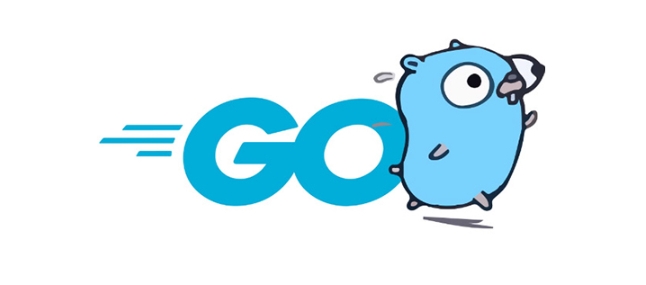建立表演者为第三方API的客户
使用专用且配置合理的HTTP客户端,设置超时和连接池以提升性能和资源利用率;2. 实现带指数退避和抖动的重试机制,仅对5xx、网络错误和429状态码重试,并遵守Retry-After头;3. 对静态数据如用户信息使用缓存(如sync.Map或Redis),设置合理TTL,避免重复请求;4. 使用信号量或rate.Limiter限制并发和请求速率,防止被限流或封禁;5. 将API封装为接口,便于测试、mock和添加日志、追踪等中间件;6. 通过结构化日志和指标监控请求时长、错误率、状态码和重试次数,结合OpenTelemetry或Prometheus实现可观测性;综上,构建高性能Go客户端需综合配置、重试、缓存、限流、抽象和监控,确保系统高效、稳定且可维护。

When building Go applications that consume third-party APIs, performance and reliability are critical—especially at scale. A poorly designed client can lead to slow response times, excessive resource usage, or even service outages due to rate limiting or timeouts. Here’s how to build efficient, robust, and maintainable Go clients for external APIs.

1. Use a Dedicated HTTP Client with Proper Configuration
The default http.Client in Go is convenient but often misused. To build a performant client, configure it explicitly:
client := &http.Client{
Timeout: 10 * time.Second,
Transport: &http.Transport{
MaxIdleConns: 100,
MaxConnsPerHost: 50,
MaxIdleConnsPerHost: 50,
IdleConnTimeout: 90 * time.Second,
},
}Why this matters:

- Timeouts prevent hanging requests from consuming resources.
- Connection pooling (via
MaxIdleConnsPerHost) reuses TCP connections, reducing latency and overhead. - Without tuning, you risk exhausting file descriptors or suffering from slow connection setup.
Use this client across your API wrapper—don’t create a new one per request.
2. Implement Retry Logic with Backoff
Third-party APIs fail. Network glitches, rate limits, and server errors happen. Handle them gracefully with retry logic.

Use exponential backoff with jitter to avoid thundering herds:
import "github.com/cenkalti/backoff/v4"
err := backoff.Retry(func() error {
resp, err := client.Do(req)
if err != nil {
return err // retryable
}
defer resp.Body.Close()
if resp.StatusCode == http.StatusTooManyRequests {
return fmt.Errorf("rate limited")
}
if resp.StatusCode >= 500 {
return fmt.Errorf("server error: %d", resp.StatusCode)
}
return nil // success, don't retry
}, backoff.WithMaxRetries(backoff.NewExponentialBackOff(), 3))Best practices:
- Only retry on transient errors (5xx, network issues, 429).
- Respect
Retry-Afterheaders when present. - Avoid retrying on 4xx errors (except 429).
3. Cache Responses When Appropriate
If the API returns relatively static data (e.g., user profiles, product info), caching can drastically reduce latency and load.
Use an in-memory cache like sync.Map or a library like groupcache or bigcache for larger datasets:
var cache = struct {
sync.RWMutex
m map[string]cachedResponse
}{m: make(map[string]cachedResponse)}
func GetUserData(id string) (*User, error) {
cache.RLock()
if val, ok := cache.m[id]; ok && time.Since(val.time) < 5*time.Minute {
cache.RUnlock()
return val.user, nil
}
cache.RUnlock()
// Fetch from API...
user, err := fetchFromAPI(id)
if err != nil {
return nil, err
}
cache.Lock()
cache.m[id] = cachedResponse{user: user, time: time.Now()}
cache.Unlock()
return user, nil
}Considerations:
- Cache only idempotent GET requests.
- Set TTLs based on data volatility.
- For distributed systems, consider Redis or similar.
4. Limit Concurrency and Throttle Requests
Even with retries and timeouts, flooding an external API can get you rate-limited or banned.
Use a semaphore to limit concurrent requests:
import "golang.org/x/sync/semaphore"
sem := semaphore.NewWeighted(10) // max 10 concurrent requests
for _, req := range requests {
if err := sem.Acquire(ctx, 1); err != nil {
break
}
go func(r *http.Request) {
defer sem.Release(1)
// make request
}(req)
}Alternatively, use a rate limiter:
import "golang.org/x/time/rate"
limiter := rate.NewLimiter(rate.Every(time.Second), 10) // 10 req/s
for _, req := range requests {
if err := limiter.Wait(ctx); err != nil {
return err
}
// make request
}Tip: Combine both for APIs with burst and sustained rate limits.
5. Structure Your Client for Reusability and Testing
Wrap the API in a clean interface:
type APIClient interface {
GetUser(ctx context.Context, id string) (*User, error)
UpdateUser(ctx context.Context, user *User) error
}
type Client struct {
baseURL string
httpClient *http.Client
limiter *rate.Limiter
}
func (c *Client) GetUser(ctx context.Context, id string) (*User, error) {
if err := c.limiter.Wait(ctx); err != nil {
return nil, err
}
req, err := http.NewRequestWithContext(ctx, "GET", c.baseURL "/users/" id, nil)
if err != nil {
return nil, err
}
resp, err := c.httpClient.Do(req)
// handle response...
}This makes it easy to:
- Mock the client in tests.
- Swap implementations.
- Add middleware (logging, tracing, metrics).
6. Monitor and Log for Observability
Add structured logging and metrics:
import "log/slog"
slog.Info("api_request", "method", "GET", "url", req.URL.Path, "duration", time.Since(start))Track:
- Request duration
- Error rates
- HTTP status codes
- Retry counts
Use OpenTelemetry or Prometheus for deeper insights.
Building a performant Go client isn’t just about speed—it’s about resilience, efficiency, and observability. By tuning HTTP settings, adding retries and rate limiting, caching wisely, and designing cleanly, you create clients that are fast, stable, and easy to maintain.
Basically: don’t call APIs barefoot. Put on some middleware, set some limits, and always plan for failure.
以上是建立表演者为第三方API的客户的详细内容。更多信息请关注PHP中文网其他相关文章!

热AI工具

Undress AI Tool
免费脱衣服图片

Undresser.AI Undress
人工智能驱动的应用程序,用于创建逼真的裸体照片

AI Clothes Remover
用于从照片中去除衣服的在线人工智能工具。

Clothoff.io
AI脱衣机

Video Face Swap
使用我们完全免费的人工智能换脸工具轻松在任何视频中换脸!

热门文章

热工具

记事本++7.3.1
好用且免费的代码编辑器

SublimeText3汉化版
中文版,非常好用

禅工作室 13.0.1
功能强大的PHP集成开发环境

Dreamweaver CS6
视觉化网页开发工具

SublimeText3 Mac版
神级代码编辑软件(SublimeText3)
 您如何与Golang的环境变量合作?
Aug 19, 2025 pm 02:06 PM
您如何与Golang的环境变量合作?
Aug 19, 2025 pm 02:06 PM
Goprovidesbuilt-insupportforhandlingenvironmentvariablesviatheospackage,enablingdeveloperstoread,set,andmanageenvironmentdatasecurelyandefficiently.Toreadavariable,useos.Getenv("KEY"),whichreturnsanemptystringifthekeyisnotset,orcombineos.Lo
 如何在GO中创建和使用自定义错误类型
Aug 11, 2025 pm 11:08 PM
如何在GO中创建和使用自定义错误类型
Aug 11, 2025 pm 11:08 PM
在Go中,创建和使用自定义错误类型能提升错误处理的表达力和可调试性,答案是通过定义实现Error()方法的结构体来创建自定义错误,例如ValidationError包含Field和Message字段并返回格式化错误信息,随后可在函数中返回该错误,通过类型断言或errors.As检测具体错误类型以执行不同逻辑,还可为自定义错误添加行为方法如IsCritical,适用于需结构化数据、差异化处理、库导出或API集成的场景,而简单情况可用errors.New,预定义错误如ErrNotFound可用于可比
 如何在GO中实现通用LRU缓存
Aug 18, 2025 am 08:31 AM
如何在GO中实现通用LRU缓存
Aug 18, 2025 am 08:31 AM
使用Go泛型和container/list可实现线程安全的LRU缓存;2.核心组件包括map、双向链表和互斥锁;3.Get和Add操作均通过锁保证并发安全,时间复杂度为O(1);4.当缓存满时自动淘汰最久未使用的条目;5.示例中容量为3的缓存添加4个元素后成功淘汰最久未使用的"b"。该实现完整支持泛型、高效且可扩展。
 您如何处理GO应用程序中的信号?
Aug 11, 2025 pm 08:01 PM
您如何处理GO应用程序中的信号?
Aug 11, 2025 pm 08:01 PM
Go应用中处理信号的正确方式是使用os/signal包监听信号并执行优雅关闭,1.使用signal.Notify将SIGINT、SIGTERM等信号发送到通道;2.在goroutine中运行主服务并阻塞等待信号;3.收到信号后通过context.WithTimeout执行带超时的优雅关闭;4.清理资源如关闭数据库连接、停止后台goroutine;5.必要时用signal.Reset恢复默认信号行为,确保程序在Kubernetes等环境中能可靠终止。
 您如何定义并在GO中调用功能?
Aug 14, 2025 pm 06:22 PM
您如何定义并在GO中调用功能?
Aug 14, 2025 pm 06:22 PM
在Go中,定义和调用函数使用func关键字并遵循固定语法,首先明确答案:函数定义需包含名称、参数类型、返回类型及函数体,调用时传入对应参数即可;1.定义函数时使用funcfunctionName(params)returnType{}语法,如funcadd(a,bint)int{returna b};2.支持多返回值,如funcdivide(a,bfloat64)(float64,bool){};3.调用函数直接使用函数名加括号传参,如result:=add(3,5);4.多返回值可用变量接收或
 绩效比较:Java vs.去后端服务
Aug 14, 2025 pm 03:32 PM
绩效比较:Java vs.去后端服务
Aug 14, 2025 pm 03:32 PM
GoTypeDeptersbetterruntimePerformanceWithHigherThrougherTuptuptudandlaterLatency,尤其是Fori/O-HevyServices,DuetoItslightWeightGoroutGoroutineSandefficientsCheduler,wherjava,whilejava,themlowertostart,bylowertostart,themlowertostart,canmatchgoincpuindtaskspu-boundtasksafterjitoptoptimization.2.gous.2.gous.2.gous.2.gous.2.gous.2.2.gome
 在GO应用中解析RSS和原子供稿
Aug 18, 2025 am 02:40 AM
在GO应用中解析RSS和原子供稿
Aug 18, 2025 am 02:40 AM
使用gofeed库可以轻松解析RSS和Atomfeed,首先通过gogetgithub.com/mmcdole/gofeed安装库,然后创建Parser实例并调用ParseURL或ParseString方法解析远程或本地feed,库会自动识别格式并返回统一的Feed结构体,接着遍历feed.Items获取标题、链接、发布时间等标准化字段,同时建议设置HTTP客户端超时、处理解析错误并利用缓存优化性能,最终实现简单、高效、可靠的feed解析。
 如何使用构建区块链应用
Aug 17, 2025 am 03:04 AM
如何使用构建区块链应用
Aug 17, 2025 am 03:04 AM
要开始使用Go语言构建区块链应用,首先需掌握区块链核心概念,1.理解区块、哈希、不可变性、共识机制、P2P网络和数字签名;2.安装Go并初始化项目,使用Go模块管理依赖;3.通过定义区块结构、实现SHA-256哈希、创建区块链切片、生成新区块和验证逻辑来构建简易区块链以学习原理;4.在实际开发中使用CosmosSDK、TendermintCore、Go-Ethereum或Badger等成熟框架和库避免重复造轮子;5.利用Go的goroutine和net/http或gorilla/websocke







